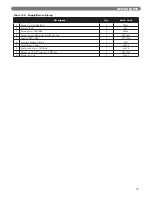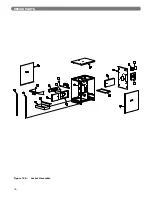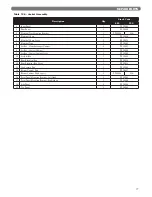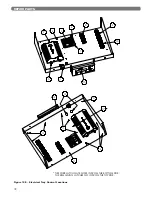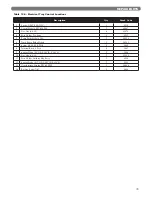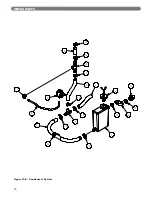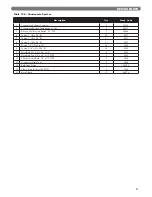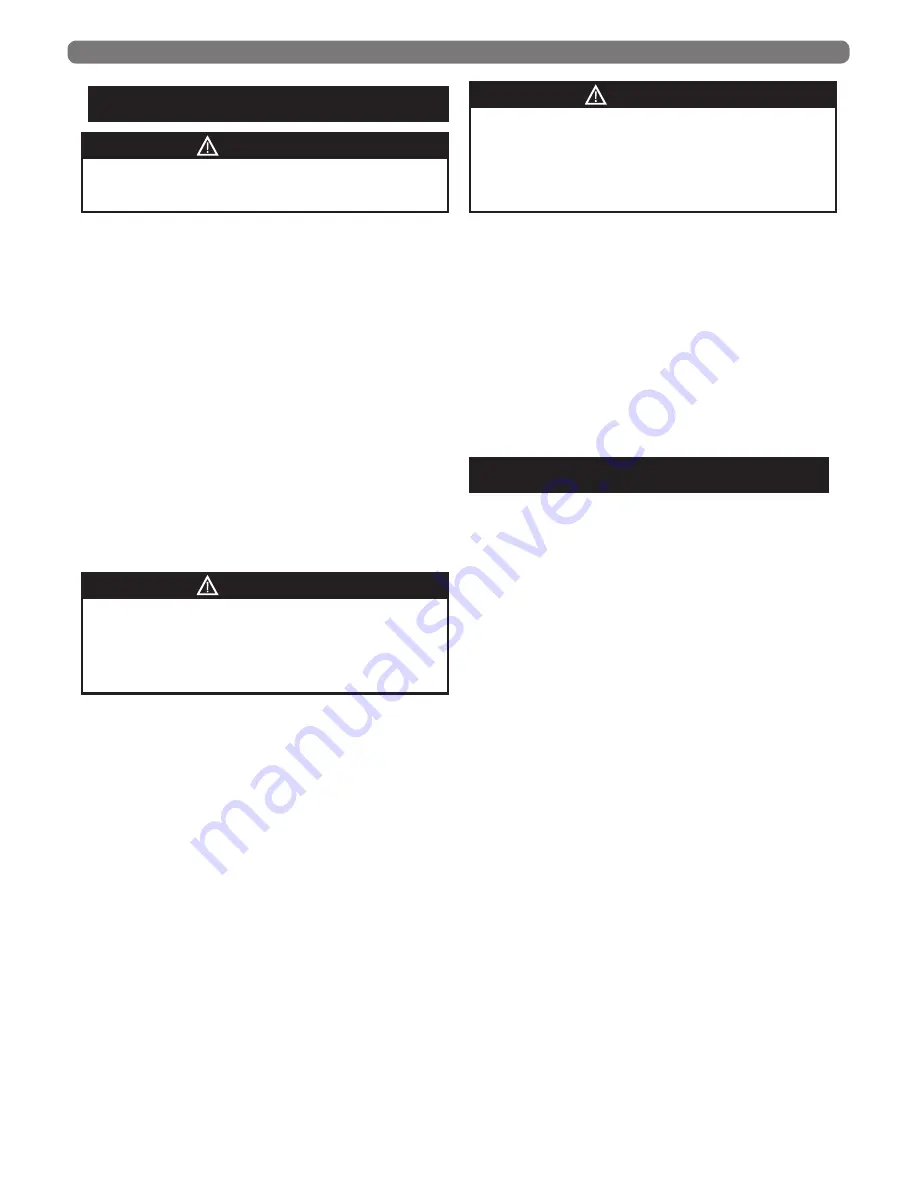
66
MAINTENANCE
C. ANNUALLY (BEFORE THE START OF
HEATING SEASON)
1. Check boiler room floor drains to assure proper
drainage.
2. Check the function of the safety relief valve by
performing the following test:
a. Check the relief valve piping to determine that it
is properly installed:
i. No manual valves are to be between the
relief valve and the boiler.
ii. No manual valves on the outlet side of the
relief valve.
iii. No reduction in pipe size on the outlet side of
the relief valve.
iv. The outlet to the valve should be piped to
within 12 inches of the floor away from
people and pets to prevent personal injury in
the event of valve discharge.
b. Check the boiler operating temperature and
pressure.
c. Lift the try lever on the relief valve to the fully
open position and hold it for at least 5 seconds.
d. Release the try lever and allow the relief valve
to close. If the valve leaks, operate the lever two
or three times to clear the valve seat of foreign
matter. It may take some time to determine if the
valve has closed completely.
e. If the valve continues to leak, it must be replaced
before the boiler is returned to operation.
f. Check that operating pressure and temperature
have returned to their normal condition.
g. Check again to confirm that the valve has closed
completely and is not leaking.
3. Test the low water cutoff (LWCO) as described in
Table 10.1 Error Number 33.
4. Test the limit operation as described in Section 9.
5. Remove the right jacket panel and open the air
plenum cover by removing (6) sheet metal screws.
Inspect the inside of the plenum for any foreign
debris that may have entered through the air intake
opening. Also, check the screen for blockage.
6. Inspect the burner, by removing (6) hex nuts on the
burner mounting plate and opening the combustion
chamber as described in Section E below. Replace
the burner if necessary.
7. With the boiler in operation, check that condensate is
dripping from the condensate tubing. Check for any
blockage or restriction in the condensate drain lines.
D. CONDENSATE SYSTEM CLEANING
INSTRUCTIONS
1. Removal of Condensate Container:
a. Close the manual gas shutoff valve at the rear of
the boiler and turn off the burner service switch.
b. Remove the right jacket panel.
c. Remove the wing nut from the condensate
collector container.
d. Disconnect the condensate hose from the bottom
of the heat exchanger.
e. Disconnect the float switch wires from the wiring
harness.
f. Disconnect the blocked flue switch hose from the
condensate hose tee assembly.
g. Disconnect the vent drain hose.
h. Lift the (condensate collector) container above
the level of the other vent drain hose to empty
some condensate from the system through the
vent hose.
i. Disconnect the condensate drain connection
from the rear of the boiler and remove the
container from the boiler.
2. Cleaning the Container:
a. Dump the contents of the container and flush it
with water.
b. Be sure that there is free movement of liquid
through the bottom port.
c. Check for leaks at all of the hose clamps.
3. Re-installing the Container:
a. Place the tank in position and attach the wing
nut.
b. Connect the hose to the heat exchanger drain.
Reconnect the blocked flue switch hose to the
barb fitting.
c. Reconnect the vent hose.
The following annual inspection must be performed
by a qualified service technician.
CAUTION
When servicing or replacing components, be
absolutely sure that the following conditions are met:
• Water, gas and electricity are off.
• The boiler is at room temperature.
• There is no pressure in the boiler.
DANGER
Opening the relief valve will result in the discharge
of hot water and/or steam. Be sure that there is no
one near the outlet of the relief valve piping during
this test. Failure to do so may result in severe
personal injury or death.
WARNING
























